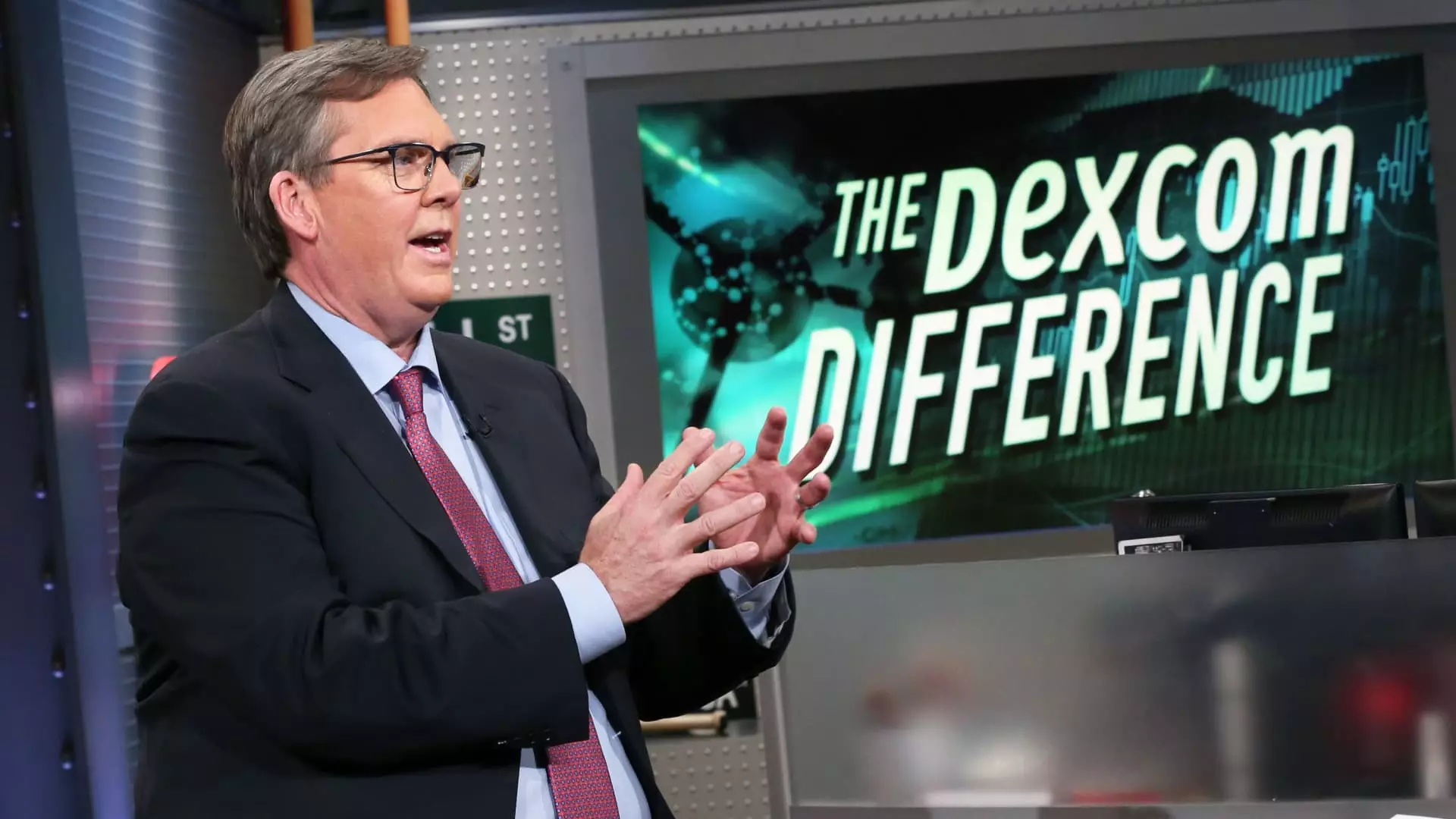Dexcom’s recent quarterly results have invoked a complex mix of anticipation and disappointment in the financial community. Although the company reported an earnings per share (EPS) of 45 cents—beating projections of 43 cents—its stock took a significant hit, plummeting 9% in after-hours trading. This reaction underscores the intricate relationship between a company’s performance and investor sentiment, particularly when the results are marred by negative trends in key areas, such as U.S. revenue.
In terms of revenue, Dexcom claimed $994 million, surpassing the expected $990 million. This represents a 2% increase compared to the same quarter last year, where revenue stood at $975 million. However, investors were let down by the news that U.S. revenue dipped 2% year over year, from $713.6 million. Such a decline in a crucial market raises eyebrows, prompting questions about Dexcom’s future prospects in the competitive diabetes management space.
The decline in U.S. revenue suggests challenges that may not be easily surmounted. Although Dexcom has maintained its full-year revenue guidance of $4 billion to $4.05 billion, this is a downward adjustment from earlier projections of $4.20 billion to $4.35 billion. These revisions are particularly concerning in the wake of a prior 40% stock drop after the company reported underwhelming second-quarter results. Such fluctuations not only affect stockholder confidence but also hint at structural issues that require urgent attention.
CEO Kevin Sayer addressed these challenges candidly, attributing some of the company’s struggles to a restructuring of the sales team, alongside lower-than-expected customer acquisition rates and diminished revenue per user. While Sayer noted improvements in these areas during the third quarter, the mere fact that these issues existed emphasizes a critical need for strategic reevaluation. The reliance on a newly launched product, Stelo, which targets adults not on insulin, introduces additional risk. While innovation is essential for growth, its success is uncertain.
On top of these financial and operational challenges, Dexcom’s chief commercial officer, Teri Lawver, has announced her retirement at the year’s end. This sudden leadership transition could further complicate an already precarious situation as Dexcom navigates market fluctuations and internal restructuring. Sayer’s decision to take the reins of the commercial organization during the transition indicates he recognizes the necessity for a solid strategy moving forward, but it remains to be seen how effective this leadership will be in stabilizing the company’s trajectory.
While Dexcom’s third-quarter results displayed resilience through better-than-expected earnings, the underlying issues of revenue decline and leadership change pose significant risks. As the market continues to react to these results, the company must pivot quickly to reassure investors and regain lost confidence. The next quarter will be pivotal; Dexcom’s ability to adapt its strategies in the face of these challenges will determine not only its stock performance but also its place in the diabetes management market.

